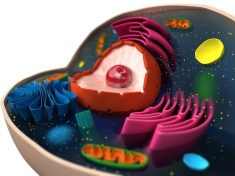Extracellular vesicles are structures released by cells and include exosomes, microvesicles, and apoptotic bodies. These vesicles are an important diagnostic toll since they carry substances from their cells of origin into circulation. The biomolecules contained within, such as RNA and proteins, can be used to determine if the cells that produced them are being affected by a disease. For example, cardiovascular diseases and cancer, lead to increase in specific extracellular vesicles. Isolating these vesicles form body fluids is not a simple task.
The current methods rely on separation by size (gradient centrifugation), or expression of specific markers (antibody labeling). These techniques have limitations since they are time consuming and cannot retrieve efficiently all the different extracellular vesicles.
There is now a new method that relies on the use of magnetic beads for the isolation of extracellular vesicles from plasma and serum samples. For this purpose magnetic beads coated with annexin A5 were used since they bind to phosphatidylserine that is present in the surface of most extracellular vesicles.By recovering most of the circulating vesicles instead of selecting them, researchers are able to latter detect the specific contents of all the vesicle types. This will allow a better and more efficient characterization of circulating extracellular vesicles.
The protocol does not need several centrifugations or filtrations allowing its use in the clinical context by reducing the sample processing time and the procedure complexity. This method is able to capture up to 60 percent of induced apoptotic vesicles generated in vitro. Furthermore, the vesicles obtained from plasma and serum contained amplifiable RNA. In vivo tests showed that tumor-derived RNA could be detected in extracellular vesicles isolated from serum.
This approach also proves that captured vesicles contain biomolecules from the diseased cells having potential as diagnosis tools.Vesicles found in systemic circulation come from tissues all over the body, therefore they also reflect the general health status of the patient and can be used in health monitoring.
Development of a magnetic bead-based method for the collection of circulating extracellular vesicles. Shih, C. L., Chong, K.Y., Hsu, S.C., Chien, H.J., Ma, C.T., Chang, J. W.C., … Chiou, C.C. (2015). New Biotechnology, 33(1), 116–122. doi:10.1016/j.nbt.2015.09.003
Related news:
- Isolation of endothelial colony-forming cells
- Magnetic separation: a new approach for targeted treatment of infection
- The study of mechanotransductionusing magnetic beads





